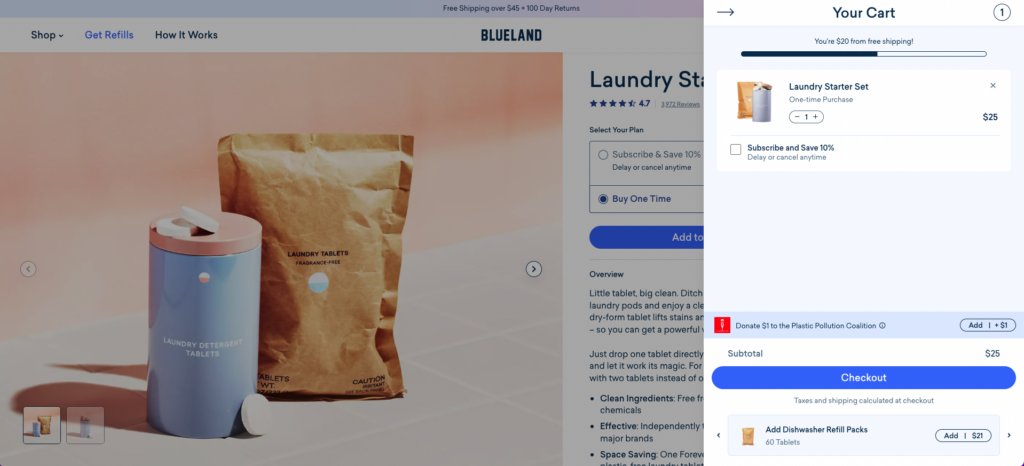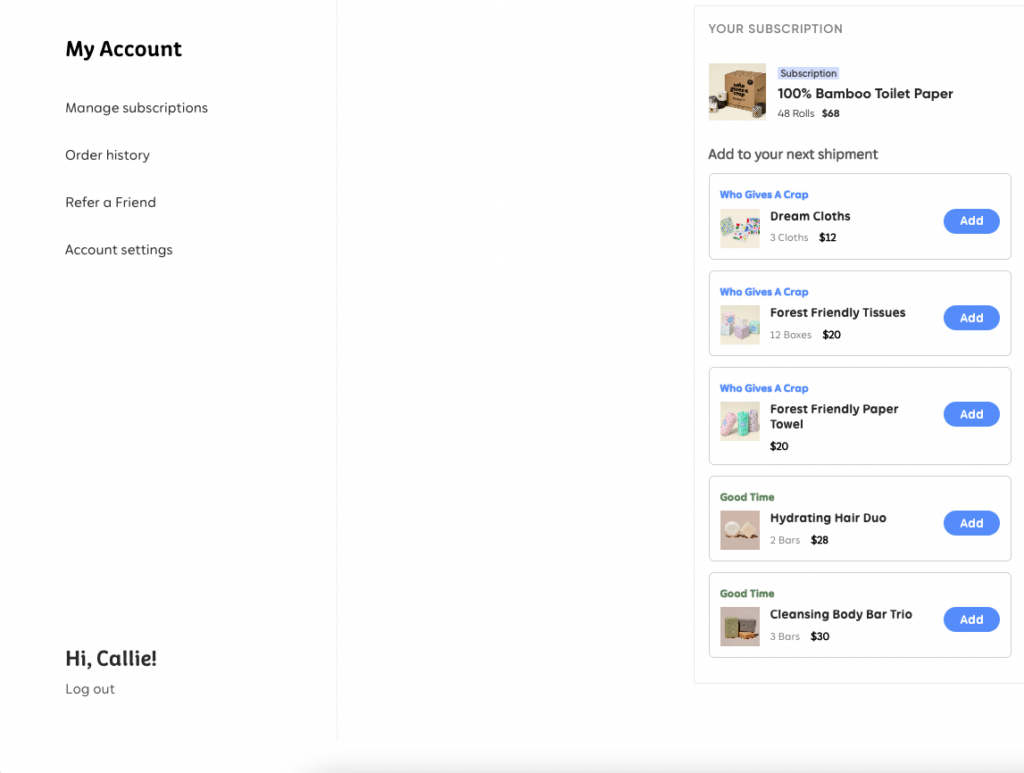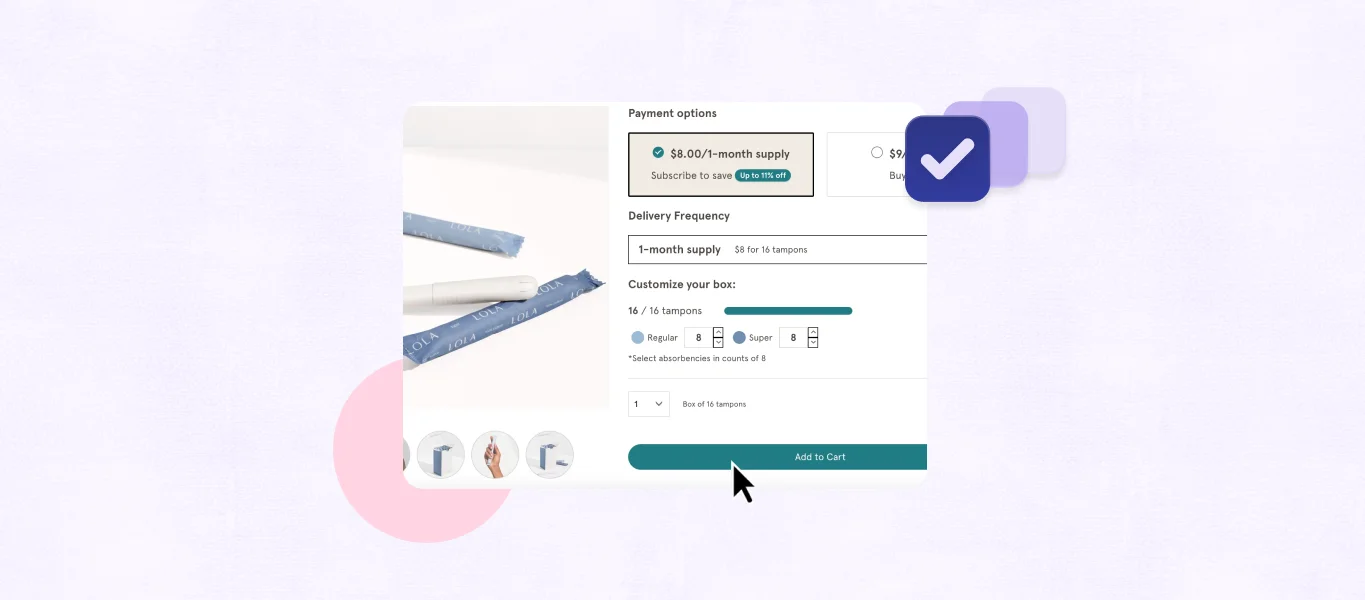As an ecommerce merchant, you know that selling a product is just the beginning of the customer journey. Building a strong relationship with your existing customers is a huge component of long-term success.
One way to do this is through cross-selling, a strategy that involves recommending complementary products to customers at the point of purchase. Cross-selling not only increases revenue per customer but also improves the customer experience by helping customers discover products that they may not have considered before.
In this blog post, we’ll explore some effective strategies for increasing your revenue through cross-selling, how to measure the effectiveness of your cross-selling, and provide ideas and cross-selling examples that you can use to improve the bottom line of your ecommerce site.
Key takeaways
- Use customer data to personalize your cross-selling recommendations
- Incorporate discounts without sacrificing profit margin
- Make the cross-sell easy on customers
3 strategies for increasing revenue through cross-selling
1. Use customer data to personalize your cross-selling recommendations
One of the most effective cross-selling tactics is to personalize recommendations based on customer data. Personalization is key to effective cross-selling campaigns. You can start by collecting and analyzing customer data, such as purchase history, browsing behavior, and demographics. This data can then be used to recommend complementary products that are most likely to appeal to a particular customer.
A great cross-selling example is from Blueland. When a customer adds a Laundry Starter Pack to their cart, during checkout, Blueland offers additional products that the shopper may want to round out their initial purchase. These simple product suggestions not only result in more sales, but also act as an awareness play for your customers at an influential time in their journey.

To incorporate data into your cross-selling strategy, you can use personalization tools such as Octane AI, which lets you create product recommendation quizzes and questionnaires that you can use to personalize cross-selling on your website.
Different businesses can personalize their recommendations in data-driven ways by basing their recommendations on a customer’s previous order history or through customer segmentation. For example, if a customer has bought pet food from your website, you can recommend products like treats, toys, or other related items.
2. Incorporate discounts strategically
Another strategy to consider for increasing average order value (AOV) through cross-selling is to incorporate discounts. Discounts can be an effective way to incentivize customers to take advantage of cross-selling. When they’re offered a discount, customers may be more willing to try out new products without the fear of having to commit financially to something they may not like.
However, it’s important to be sure not to over-discount your products and miss out on profit margin. Instead, you must research and determine the ideal discounted price for your efforts that will help increase purchases without bringing down your bottom line.
For example, a business selling skincare products might offer a discount on a new facial cleanser when a shopper purchases a moisturizer. This can incentivize them to try out the new product while still increasing AOV and maintaining profit.
3. Increase the accessibility of cross-selling
Another strategy for increasing revenue through cross-selling is to increase the accessibility of your cross-sell items. Ease-of-use and convenience are crucial to successful cross-selling, and making those opportunities easy and convenient for your customers to take advantage of can help boost sales for your online store.
To make cross-selling convenient for your customers, consider adding cross-selling opportunities at multiple points in the customer journey. For example, you can include cross-selling opportunities on the checkout page, in the customer portal, and in post-purchase emails. Additionally, make sure your cross-sells are accessible on multiple devices through strategies such as transactional SMS.
For example, Who Gives A Crap sells a toilet paper subscription. In the customer portal, shoppers can add complementary items to their next shipment. Without being forced to make an additional purchase, an existing customer can easily and quickly add on relevant products and know they’ll be included in their upcoming shipment. A personal anecdote—this cross-sell works on me… a lot.

How to measure the success your of cross-selling program
Once you’ve implemented cross-selling strategies, it’s important to measure their impact on revenue and other key performance indicators (KPIs). There are several metrics ecommerce merchants should be tracking to evaluate cross-selling campaigns, including AOV, lifetime value (LTV), and customer retention rates.
Increase average order value using cross-selling techniques
A successful cross-selling strategy should increase the amount of money your average customer spends with you in a single order. If you see your AOV declining or remaining stagnant, re-evaluate your discount strategy to ensure you’re not discounting to the point of losing out on important profit margins.
Cross-sell your way to increased customer lifetime value
. It’s crucial to track the total amount of money a customer will spend on your site over the course of their relationship with your business. In doing so, you can see if your cross-selling efforts are leading to a higher lifetime value for your customers. Increases in LTV ultimately mean that your customer is continuing to see the value you bring to them. By highlighting the key benefits of additional products, you not only can see an increase in revenue over time, but also an increase in your longevity with your customers.
Retain your best customers by suggesting additional products
By tracking the percentage of customers who continue to purchase from your business over time, you can see if your cross-selling strategies are leading to a higher likelihood of customers returning to purchase again. By using strategies like including cross-selling options in places like the customer portal or in transactional SMS, you increase opportunities for your customers to engage with you. Increased engagement can mean increased retention. And in a world in which acquisition costs are higher than ever, retention remains the most important focus for ecommerce businesses.
The difference between cross-selling & upselling
Cross-selling isn’t the only road to increasing AOV, LTV, and retention. Upselling, while often referenced when talking about cross-selling, is a separate sales technique to increase revenue. Where cross-selling focuses on offering other products to customers that are similar in nature, upselling provides options for an upgraded version of the product or service a customer is purchasing.
For example, Arcane Fibre Works, a yarn company, offers customers a subscription as part of their “Sock Club.” Yarn enthusiasts can select the color-family of yarn they’d like to receive. But Arcane Fibre Works has a creative upselling tactic. In their dropdown, they offer a “One of each!” option, where customers can receive all 3 in the color-family for an upcharge.

Cross-selling is crucial
Cross-selling is a crucial sales tactic of any ecommerce business looking to maximize revenue and improve the customer experience. By using customer data to personalize recommendations, incorporating discounts strategically, and increasing the accessibility of cross-selling options, merchants can effectively increase their bottom line. Additionally, tracking key performance indicators and continually optimizing efforts can help merchants see the greatest impact from cross-selling campaigns in terms of AOV, LTV, and retention rates.



